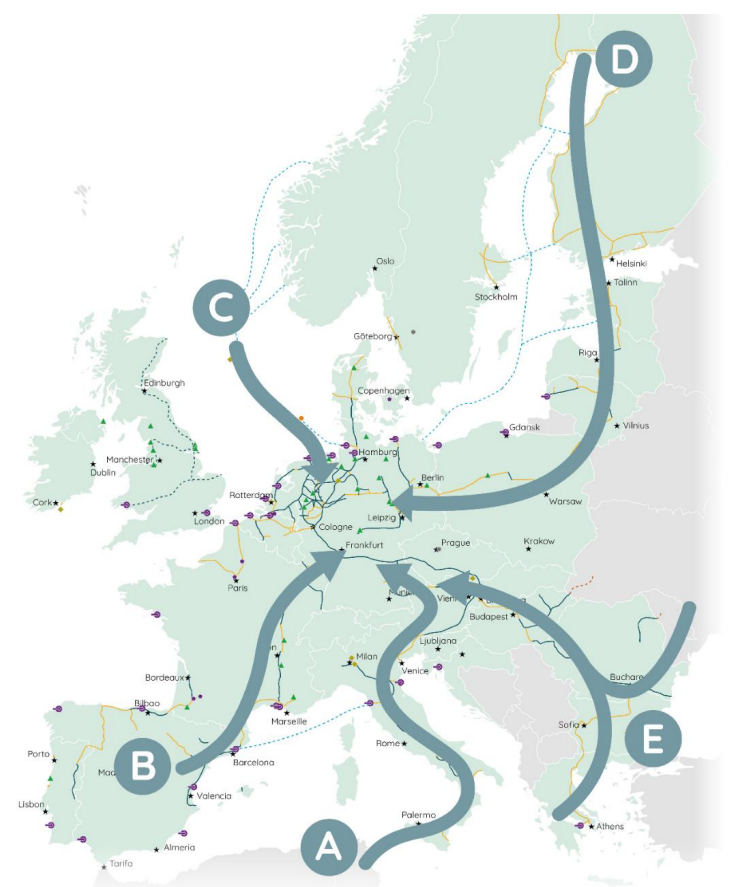D6.2 - Report on main interoperability and cross border issues
The European Union has clearly identified hydrogen as an important building block in the new EU-wide energy and raw materials strategy and has set a decisive course for the production of hydrogen in Europe, its import into Europe and the development and use of a suitable hydrogen infrastructure.
A major advantage of this strategy is that large parts of the existing gas infrastructure can continue to operate through retrofitting. Specific geographical conditions, especially with regard to hydrogen production and import, as well as structural differences in demand, show that cross-border transport of hydrogen will be necessary in the future to meet demand and fully exploit the economic and environmental potential within the European Union.
At the beginning of the project, it was assumed that hydrogen blending will play an important role in the ramp-up of the hydrogen economy, in order to transport hydrogen from regions with high hydrogen production and import potential to regions with high demand. However, an analysis of the blending provisions of the Gas Package, which is currently being finalised, shows that the institutions of the European Union – the European Commission, the Council of Europe and the European Parliament – want to significantly restrict the blending of hydrogen into the natural gas network at border
crossings.
The transmission network operators of the Member States seem to share this approach and have early started and focused to plan a European hydrogen network, focusing on the transport of pure hydrogen.
The heterogeneity of the industrial and customer structure in the EU Member States and the requirements of the respective customers in terms of natural gas/hydrogen quality mean that there are no strategies that work equally efficiently in all regions. The Gas Package is likely to allow a degree of
freedom, for example with regard to national blending and bi-/multilateral agreements with higher blending limits. However, it is clear that there needs to be a harmonised baseline system to avoid market fragmentation and inefficient curtailment of production and demand.
CEN is currently drafting a gas quality standards containing hydrogen concentration requirements respecting the technical feasibility in regional and local gas systems.


